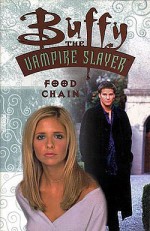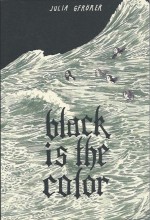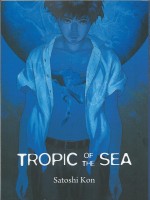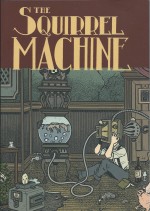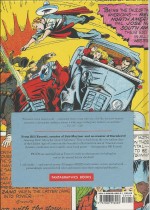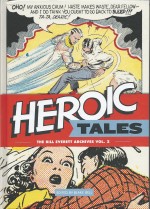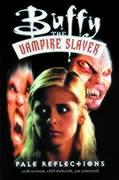
By Christopher Golden, Tom Sniegoski, Cliff Richards, Christian Zanier, Joe Pimentel & Digital Jump (Dark Horse/Titan Books)
ISBN: 978-1-84023-366-7
These days an ingenuous ingénue loving an undead bloodsucker is so worn out and overused it is mostly a subject of parody and jest, but not too long ago the concept was relatively fresh and enticing, with longed-for trysts generating lots of sparks and oodles of blood…
For an entire generation, their first brush with the idea came courtesy of landmark TV show Buffy the Vampire Slayer.
Her charismatic career began after a clueless cheerleaderValley Girl teenager suddenly turned into an indomitable monster-killer: latest winner of an arcane mystic/genetic lottery which transformed unsuspecting mortal maids into martial arts killing machines…
The cult series and its assorted media spin-offs refocused the zeitgeist and, since comics’ clever, witty graphic interpretation of the show is what interests me most, here’s a look at one of the first team-up projects.
Once the company secured the strip licensing rights, they began generating a Buffy regular series, a welter of original graphic novels, specials, numerous miniseries and eventually a full spin-off.
Buffy Summers lived in the small California hamlet of Sunnydale, unfortunately situated on a paranormal portal to the Nether Realms dubbed The Hellmouth. Here she and a small band of friends battled devils, demons and every sort of horror inexorably drawn to the area and whom/what/which all considered humanity an appetiser and planet Earth an irresistible eldritch “fixer-upper†opportunity.
With Rupert Giles, scholarly mentor, father-figure and Watcher of all things unnatural, Buffy and her “Scooby Gang†began making the after-dark streets of Sunnydale safe for the oblivious human morsels, aided by an enigmatic stud-muffin calling himself Angel…
He was a good vampire – one who possessed a soul – and he and the Summers girl fell in love. Sadly that broke the spell which made him a tragic hero and instead unleashed the diabolical vampire he had been – the red-handed Angelus who had turned Europe into his personal charnel house for nearly two centuries.
When Angel was finally restored to the ranks of the valiant – thanks to the loving efforts of the Slayer – the paralysing guilt and threat of a relapse compelled the vampire to leave Sunnydale and set up monster-killing shop in Los Angeles: a city packed with its own plague of supernatural horrors (in actuality the separation was prompted by Angel winning his own TV series and naturally that meant a solo comicbook too)…
This British Titan Books edition – collecting the story originally and alternately seen in Angel #15-16 and Buffy the Vampire Slayer #29-30 (January and February 2001) – combines the talents of scripters Christopher Golden & Tom Sniegoski with illustrators Cliff Richards, Christian Zanier, Joe Pimentel & Digital Jump and commences with an Introduction by Golden, detailing the genesis of this ambitious crossover before the drama commences in LA, where Angel is enduring heightened demonic assaults.
The monsters are furiously out of control, claiming Angel’s deadly new female ally is responsible for ramping up the ongoing Cold War. Unfortunately, the undead crusader has absolutely no idea what the assembled horrors are talking about but realises things are getting desperate when higher level demons attack him in his own sanctuary…
Meanwhile in London, the Council of Watchers convene a special meeting. The normally passive supernatural society are all in a tizzy over Mr. Travers‘ pet project. It seems his disciple Alexa Landry has absconded with a number of arcane artefacts and is now creating a public spectacle, acting more like a Slayer than a coolly dispassionate occult observer…
In Sunnydale, recent College Freshman Buffy Summers has also noticed a sharp jump in monster mayhem. Night predators are streaming in, having escaped from LA and all claiming – in the brief moments before the Slayer ends them – that they are being relentlessly stalked and savagely destroyed by another human female…
Back in Los Angeles, Angel barely survives a nigh-overwhelming monster ambush only to discover on returning home that his mortal allies Cordelia and Wesley have been brutally beaten by an apparently rogue female Watcher…
Buffy #29 then resumes the tale as Giles gets a call from the hospitalised Wesley and rallies the gang to Angel’s assistance. Soon he, Buffy, witches-in-training Willow and Tara, former-demon Anya and plucky human sidekick Xander are on the road – but not the Slayer’s current boyfriend.
Left behind and sulking is Riley Finn – a military spook-buster trained by the government as part of a covert Federal anti-demon task force. Apparently Buffy isn’t too keen on her past and present beaus trading stories…
In a flashback, the scene switches to the 19th century where Sir Andrew Landry and his faithful band of vampire hunters spectacularly fail to destroy the diabolical Angelus. Moreover the deeply insulted and chimeric vampire determines to visit his particular brand of generationally extended retribution upon the nobleman and his family…
Back in the now, Angel has his first painful encounter with Alexa, last of the Landrys, even as Watcher Travers reintroduces himself to Buffy and Giles. The perturbed patriarch wants the Slayer’s help in stopping his off-the-rails acolyte, but before he can ask, the trio are attacked by a posse of demons out for payback…
Elsewhere, as Alexa thrashes Angel, the story emerges: Travers had clandestinely supplied Landry with mystic weaponry in the hopes she would prove a more loyal tool than Buffy, utterly unaware that his scholarly protégé had a personal agenda to address wrongs dating back centuries…
Now she is seemingly unstoppable and even combining all their various monster hunting forces isn’t enough to stop the magically augmented, vengeance-crazed psycho…
Luckily Buffy and Giles have a cunning plan…
With covers by Keith Wood, Zanier & Dave Stewart, this is a splendidly straightforward, fast and furious action romp blending supernatural thrills, beastly chills and sharp wit: a total tonic prescribed for anybody suffering a surfeit of lovestruck face-suckers and kissypoo predators – which last really should know better at their age…
Buffy the Vampire Slayer™/Angel ™ & © 2001 Twentieth Century Fox Film Corporation. All rights reserved.

